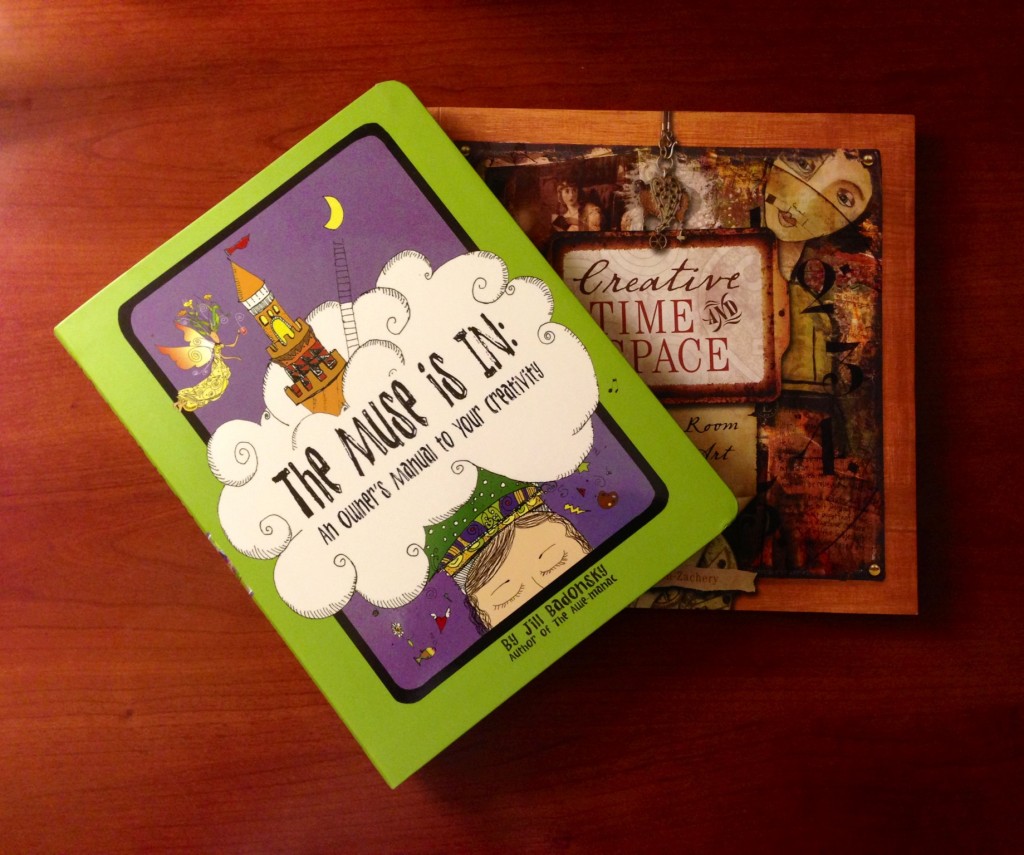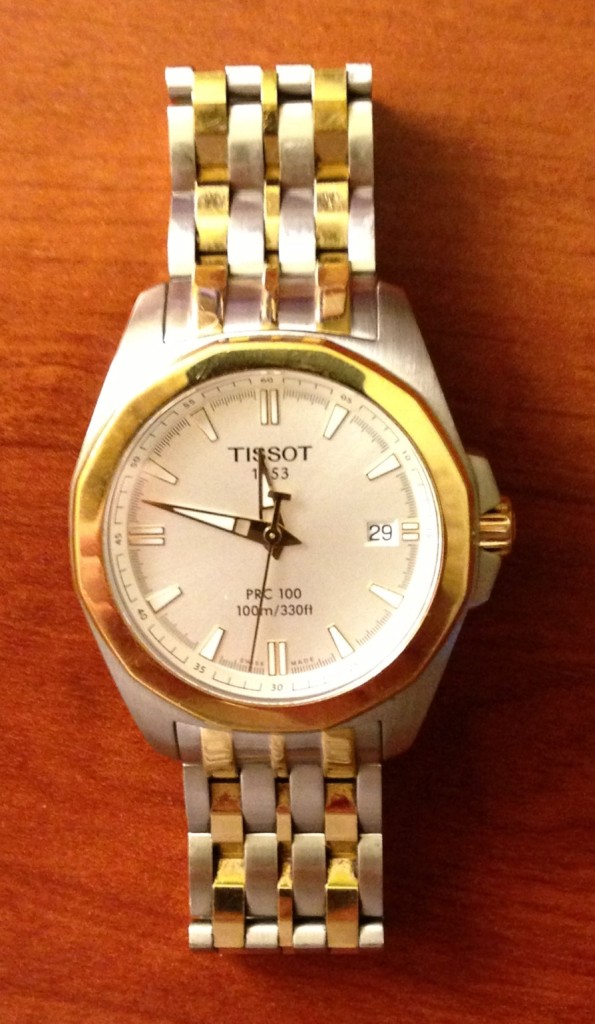Armed with your sewing pattern, you visit the fabric store and carefully select a beautiful palette of fat quarters. You pick up thread and other notions, pay for your treasures and then drive home, intending to start right away. Once you get home, however, the wait begins. Oh, you take the time to pre-wash your fabric and press it, but then you wait for the perfect moment to begin your project. You wait for there to be enough time to pin your pattern to the fabric and cut it out, and you wait even longer to sit down in front of the sewing machine because first you have to clear away working space, vacuum the rug, sort the laundry, dust the furniture in the living room, and pay the bills.
“If only I had the time,” you moan, “I’d sew more.”
Before you know it, you’re standing in the cash register line at the fabric store, your shopping cart filled with more fabrics and notions for another project. You know the drill. Any excuse you can find before you begin your sewing project presents itself and you latch onto those excuses eagerly, knowing absolutely that you have a good reason for not beginning your creative project. You’ve convinced yourself that you would sew, write, paint, fuse glass, throw a pot, sketch or weave if only you had more time. Eventually your tools and materials collect dust, you forget about them, you give them away to others, or pack them away in cartons.
 Books about creativity are filled with stories about procrastination and how to overcome this block to creativity. According to Jill Badonsky of The Muse is In: An Owner’s Manual to Your Creativity, “You don’t need to take a class, build an art studio, get a desk, go on a retreat, or break up with your boyfriend and move to New York, to begin.” The solution is to simply begin. Got writer’s block? When I took creative writing classes decades ago, my professor told me to slide a sheet of paper into the typewriter and simply begin typing about anything that came to mind. Does it work? I think so. As I sat down to write this post, for example, I knew that I wanted to write something about the process of creating, but wasn’t really sure where my post would take me until I wrote my first sentence. When you want to create something, you need to put one foot in front of the other, and simply follow the path that opens up. Trust your muse, and let things happen.
Books about creativity are filled with stories about procrastination and how to overcome this block to creativity. According to Jill Badonsky of The Muse is In: An Owner’s Manual to Your Creativity, “You don’t need to take a class, build an art studio, get a desk, go on a retreat, or break up with your boyfriend and move to New York, to begin.” The solution is to simply begin. Got writer’s block? When I took creative writing classes decades ago, my professor told me to slide a sheet of paper into the typewriter and simply begin typing about anything that came to mind. Does it work? I think so. As I sat down to write this post, for example, I knew that I wanted to write something about the process of creating, but wasn’t really sure where my post would take me until I wrote my first sentence. When you want to create something, you need to put one foot in front of the other, and simply follow the path that opens up. Trust your muse, and let things happen.
In her book, Creative Time and Space: Making Room for Making Art, Ricë Freeman-Zachary advises artists to forge a relationship with time. “Make a list of things you do where you lose track of time,” she says. She points out that most artists completely lose track of time when they are deep into the flow of their creative project. Your goal should be to incorporate into your day more of the things that make you feel that way. Freeman-Zachary suggests you draw a “time line” for a typical day, any kind of graphical representation of a timeline, and make it thin in the parts of the day where time seems to fly, and thicker in the parts of the day where it seems to slow down. Jot down notes about how these times of the day make you feel, and locate the time(s) of day that are conducive to your brand of creativity. For me, for example, time seems to slow down when I take a shower, when I iron fabric, or when I crochet. These are times my mind wanders and generates ideas. I’ve learned to take advantage of these times to record my ideas so that when I have a few minutes to be creative, I don’t have to waste time coming up with an idea; it’s a matter of choosing an idea already listed in my notebook or on a flash drive.
In the summer 2013 issue of Artful Blogging, blogger Natalie Pirvey of Crème de la Craft talks about how she can’t remember a time when crafting wasn’t part of her life, but how the routine of daily tasks gradually made her crafting time take a back seat. She cut out magazine pages with crafting projects that she hoped would inspire her to create, but instead ended up “with a big pile of papers and no craft project to go with it.” She began blogging as a creative outlet and discovered that sharing her ideas with an audience gave her the motivation to follow through and complete craft projects. Every day, she takes a few minutes to write down one creative idea in a journal. By the end of the week, she has seven ideas to choose from about which she can blog. At the end of two weeks, she has 14 blogging ideas—and 14 project ideas. One creative project leads to another. The lesson here is that the act of creating is its own solution to the problem of finding time. Establish a creative habit, and it sustains itself.
 There is conflicting information about whether deadlines help us find time to be creative. What do you think? In Increase Creativity—Set Deadlines!, Deborah Watson-Novacek writes, “Have you noticed as you get closer to a deadline, you become more creative? Deadlines cause our thoughts and imagination to become active, giving us ideas to get the job done before the deadline.” But a study described by Keith Sawyer in Do Tight Deadlines Make You Less Creative? suggests that in an employment scenario, as deadlines approach, employees become less creative unless employees are open to creating under time pressure and also work in an environment that is supportive of creativity. Ricë Freeman-Zachary would argue that to make time to create, you need unstructured time to play. “One of the things I hear over and over is that people wish they had permission to play. They want to play—to make stuff without thinking about the results, to try new things, to experiment—without the pressure of rules or goals or time limits—but they feel guilty when they do it, as if they’re cheating by doing something that seems to have no purpose.”
There is conflicting information about whether deadlines help us find time to be creative. What do you think? In Increase Creativity—Set Deadlines!, Deborah Watson-Novacek writes, “Have you noticed as you get closer to a deadline, you become more creative? Deadlines cause our thoughts and imagination to become active, giving us ideas to get the job done before the deadline.” But a study described by Keith Sawyer in Do Tight Deadlines Make You Less Creative? suggests that in an employment scenario, as deadlines approach, employees become less creative unless employees are open to creating under time pressure and also work in an environment that is supportive of creativity. Ricë Freeman-Zachary would argue that to make time to create, you need unstructured time to play. “One of the things I hear over and over is that people wish they had permission to play. They want to play—to make stuff without thinking about the results, to try new things, to experiment—without the pressure of rules or goals or time limits—but they feel guilty when they do it, as if they’re cheating by doing something that seems to have no purpose.”
My own observation about creativity and deadlines relates to Destination Imagination, the creative problem-solving program for which I’ve volunteered for more than 13 years. In this program, student teams solve open-ended challenges over a period of several months. When the students set their own deadlines, the level of creativity seems to be higher than when deadlines are imposed on them by others. On the other hand, the students practice Instant Challenge, solving on-the-spot problems with imposed time limits of 5 to 8 minutes. Are their solutions creative? For those that practice the process frequently and consistently, the answer is yes.
In the end, when it comes to finding time to create, I guess I subscribe to the advice of Austrian writer Bertha Eckstein-Diener: “The only way to have time is to take time.”
© 2013 Judy Nolan. All rights reserved.

Great post! I personally find deadlines seem to cause a creative brain freeze. Your ending quote is so apt.
But when I “take” time, it usually means I’m stealing it from something else that also deserves time and attention–family, work, exercise, sleep….finding the balance is a daily challenge.
Excellent post with lots of food for thought! I see myself in your opening paragraphs…. just substitute yarn for fabric!
Judy,
Great article. I read a study that showed if you give time you perceive you have more time. http://www.people.hbs.edu/mnorton/mogilner%20chance%20norton.pdf Maybe if we can encourage those waiting in line to buy their fat quarters to volunteer for Destination Imagination they would then feel they had more time to create their projects.
You’re so right about supplies and ideas piling up! I can’t count how many times I’ve bought supplies and never got around to using them!
I think when it comes to deadlines and creativity, this is different for each person. I get more done when I know I have a deadline, but I don’t know that I’m more creative. And some people find deadlines to be overwhelming and then they get nothing done. So I see both sides of this argument.
Great post!